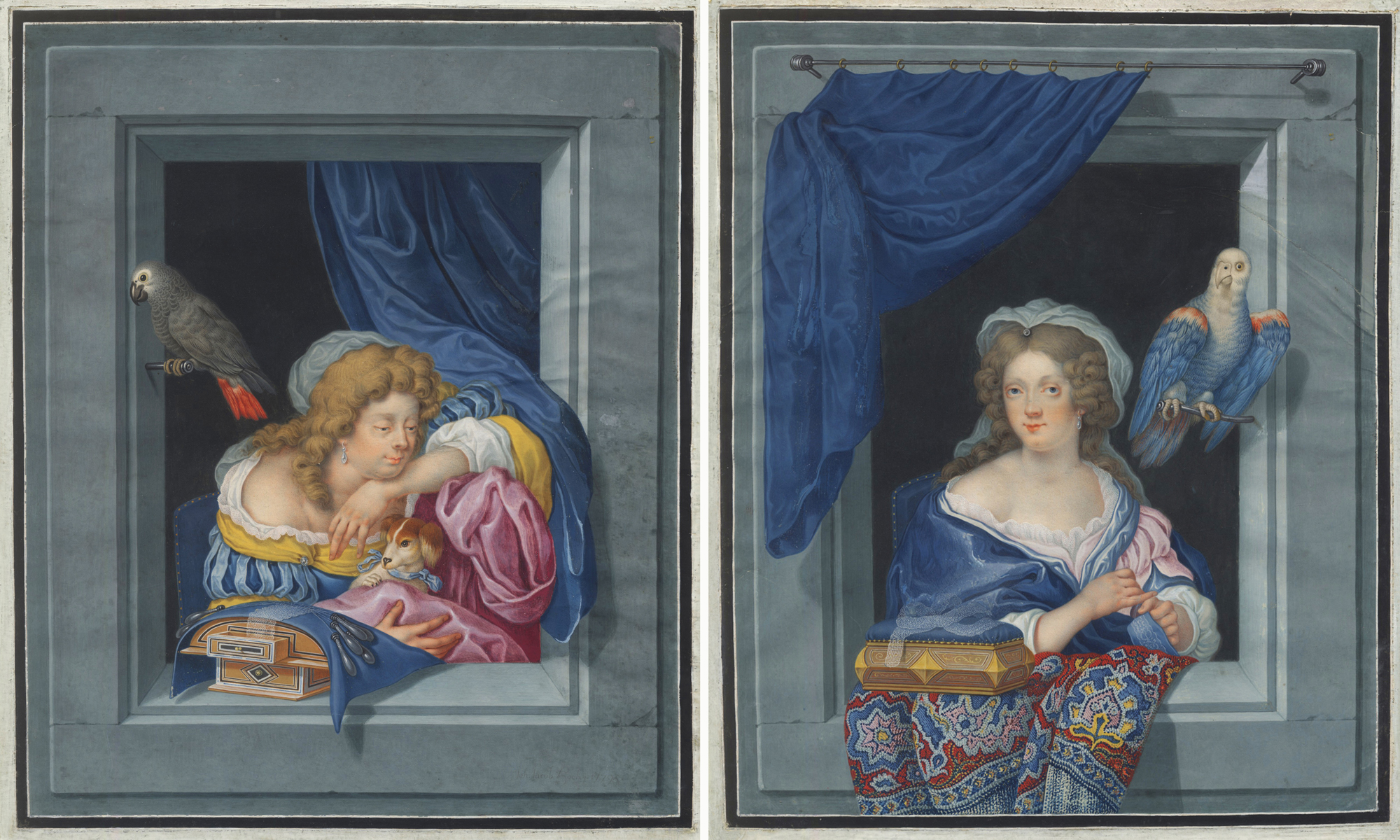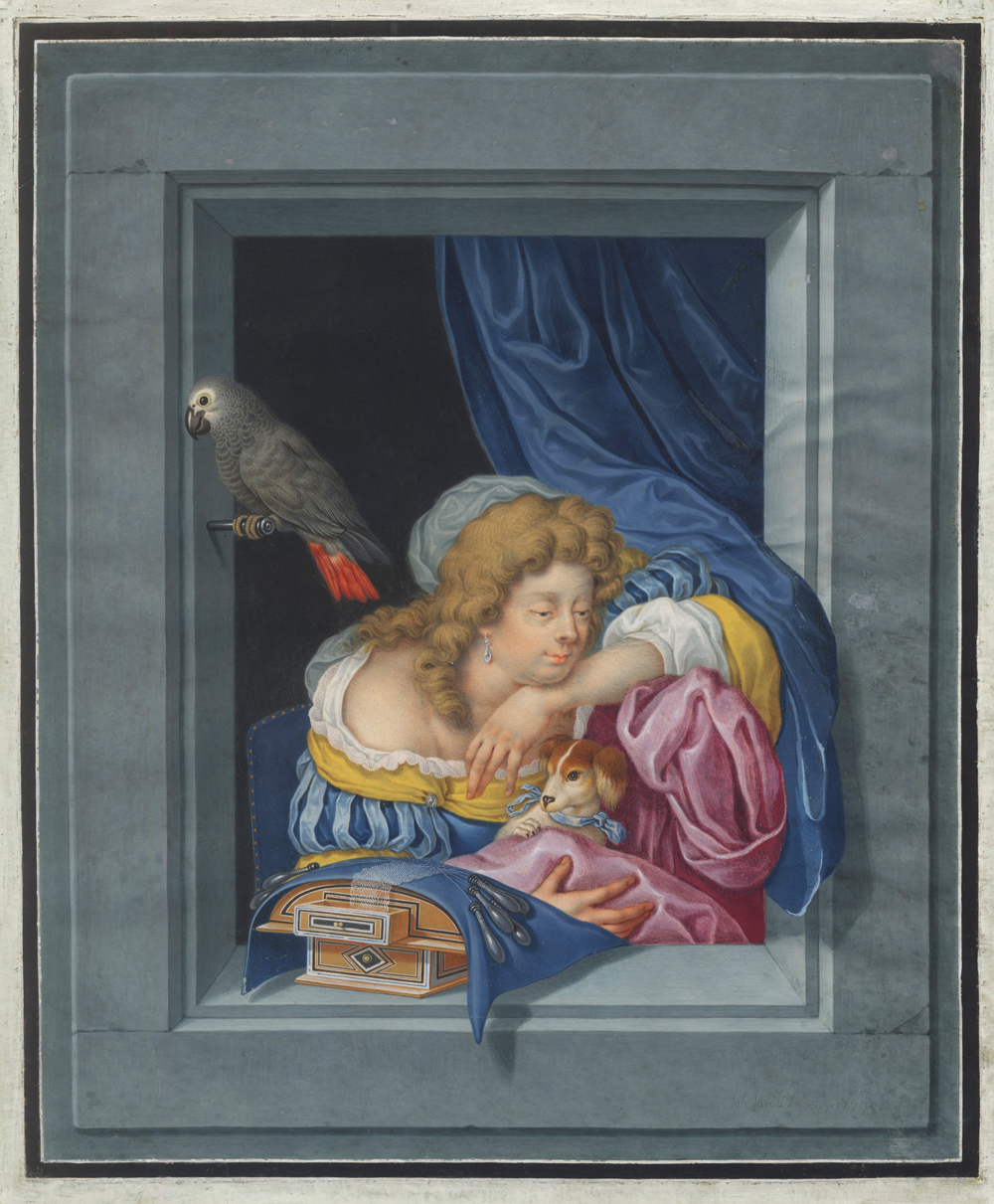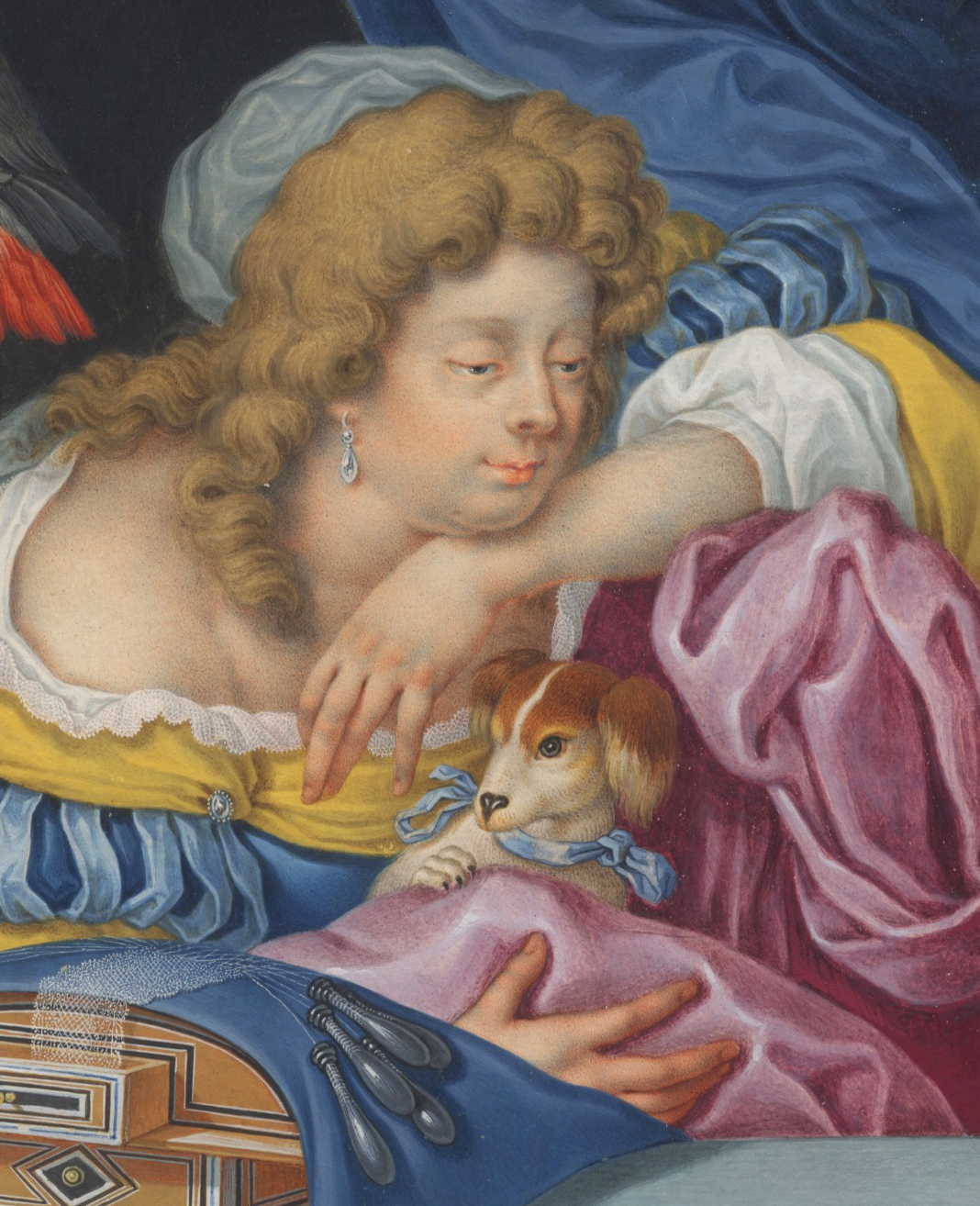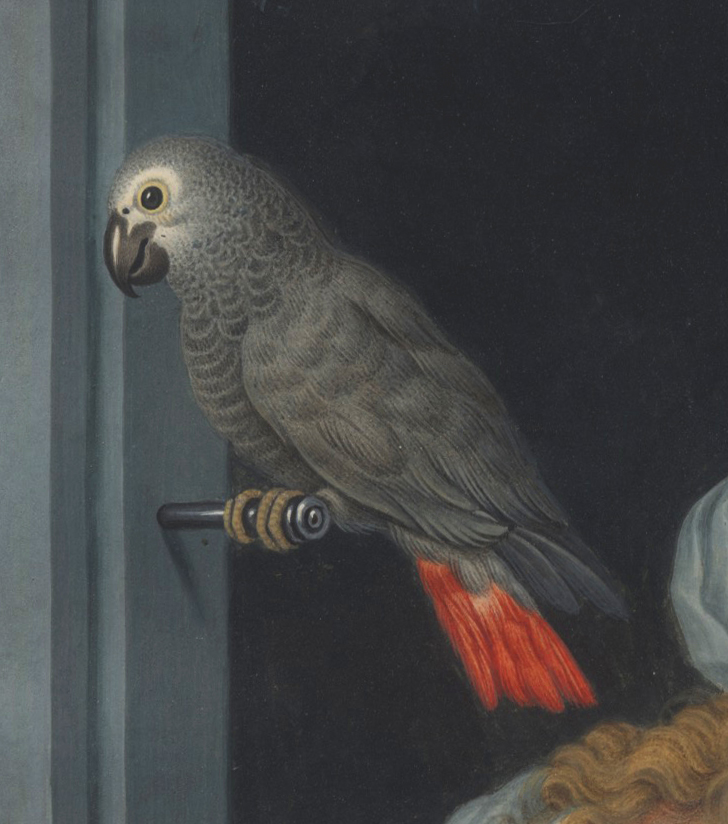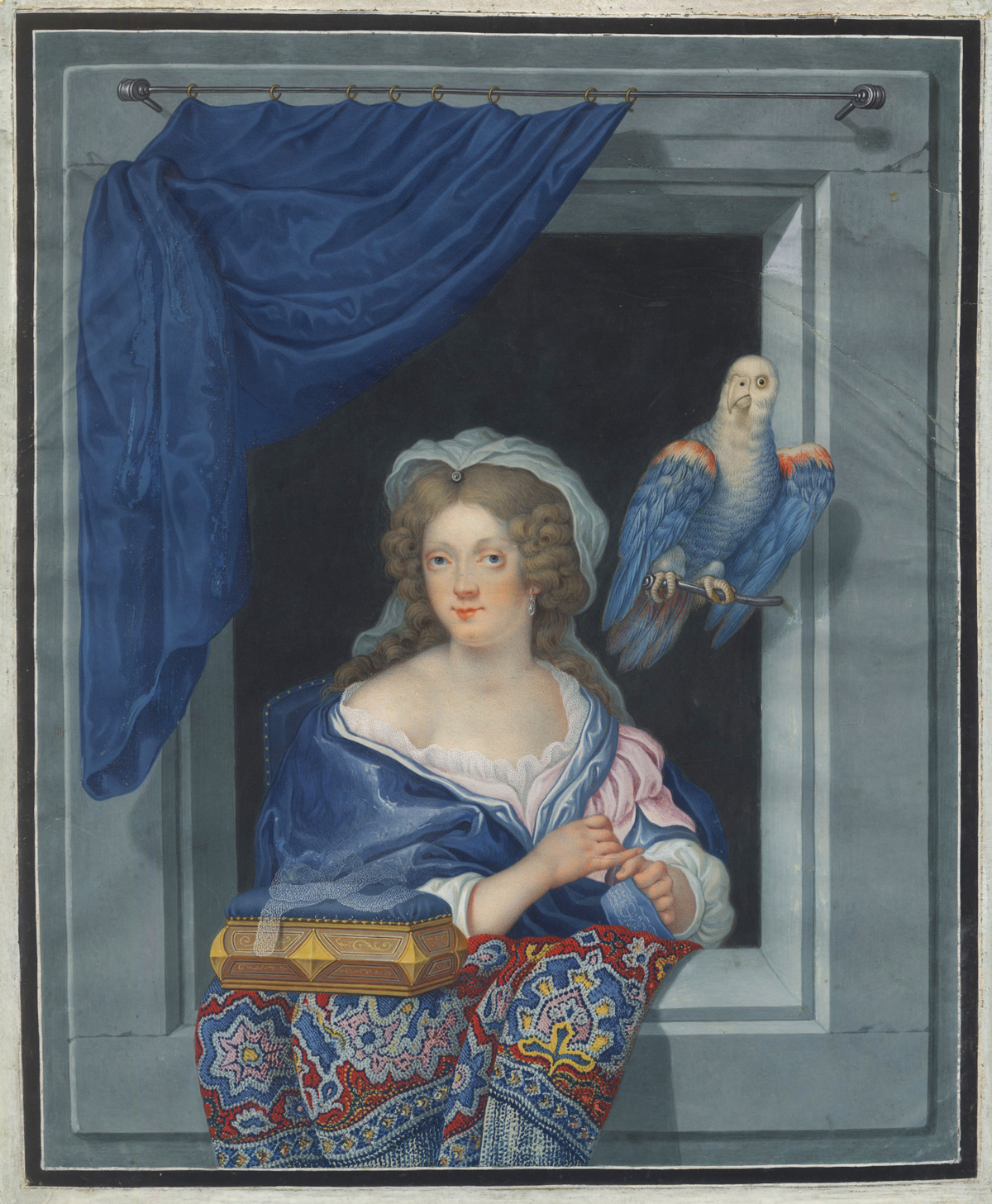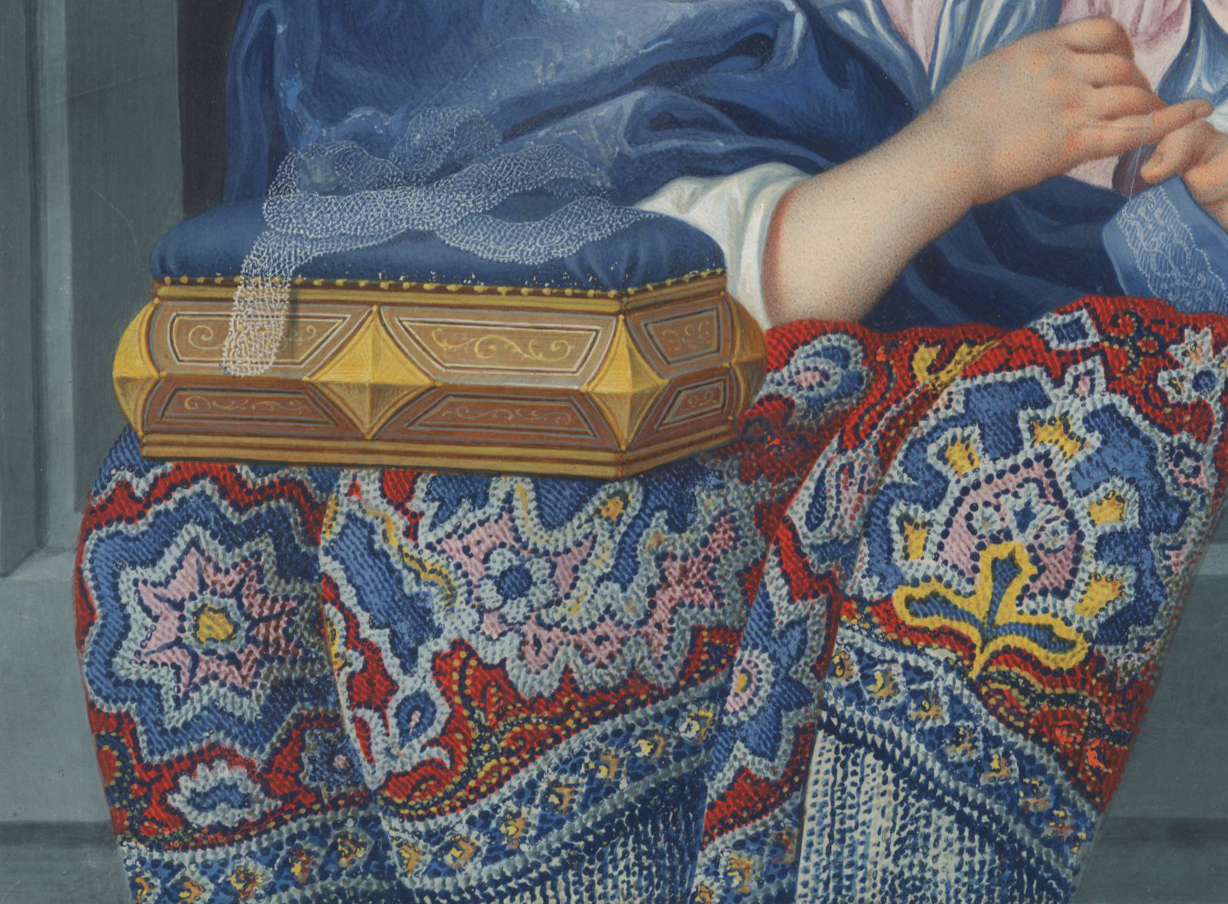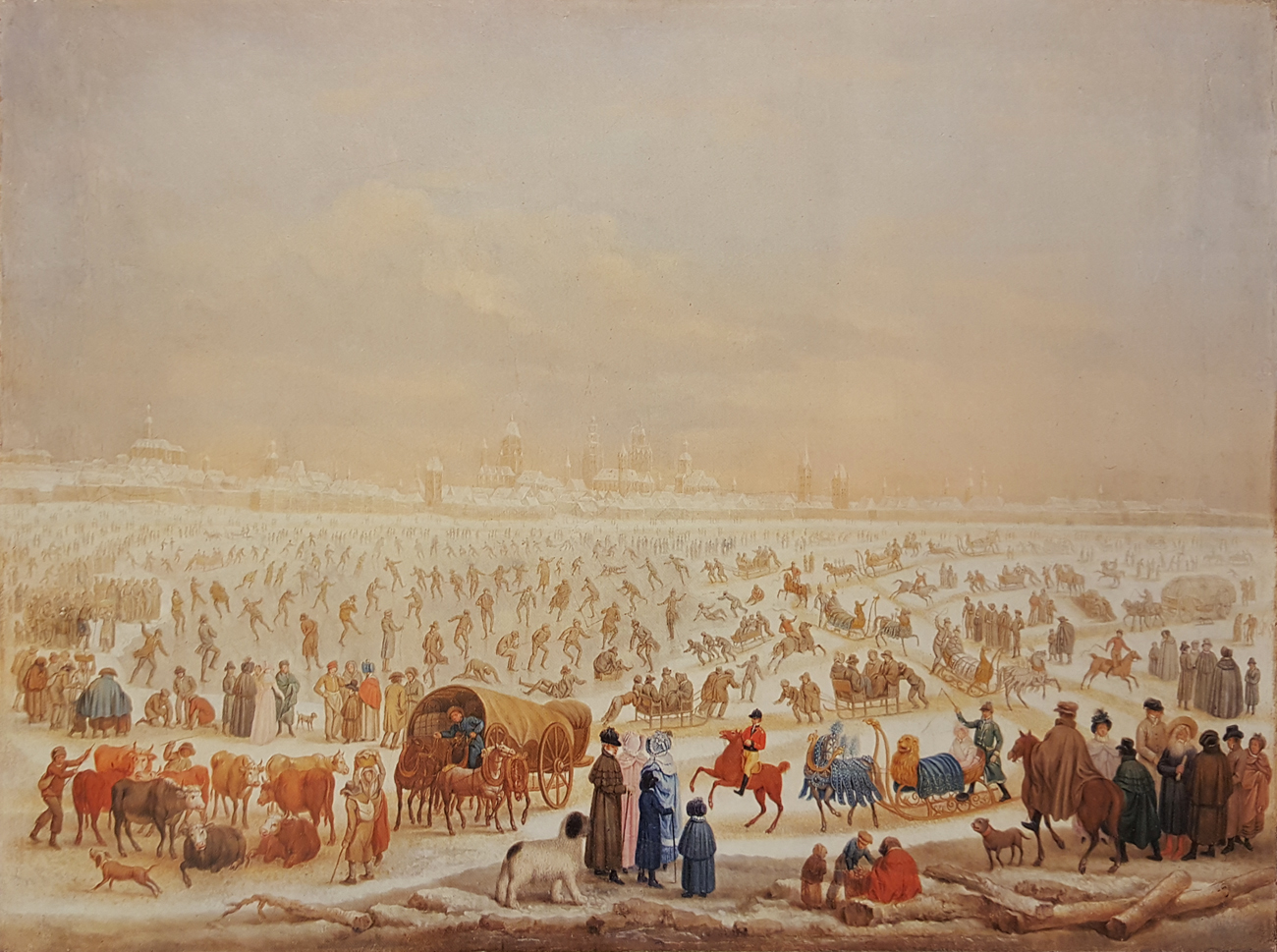JOHANN JAKOB HOCH (Mainz 1750 – 1829 Mainz)
Johann Jakob Hoch (Mainz 1750 – 1829 Mainz)
Lady with a Dog and a Parrot in a Stone Niche; Lady with a Parrot in a Stone Niche
Watercolour and bodycolour on vellum prepared white, 265 x 216 mm (each)
One signed and dated ‘Joh. Jacob Hoch f. 1798’ (lower right)
Provenance
Henry Rogers Broughton, 2nd Baron Fairhaven (1900–1973); by family descent until 2015
***
Johann Jakob was born as the son of the Mainz court painter Johann Gustav Hoch (1716–1779) in 1750.1 Johann Jakob and his brother, the battle painter Georg Friedrich (1751–1812), were patronized by the last Elector of Mainz, Friedrich Karl Joseph von Erthal. The Elector awarded them a stipend to finish their artistic ‘Bildung’ – initially the brothers studied at the Vienna Academy, where Johann Jakob studied from 1778 to 1781, briefly returning to Mainz on the death of his father in 1779.
Towards the end of 1782 Johann Jakob set off for Paris, where he exhibited two miniatures in the ‘Salon de la Correspondance’ in January of the following year, including one of a lady holding a parrot, which must have been reminiscent of the present sheets.2 When he registered to study drawing in the gallery of antiquities of the Paris Academy in 1783, the renowned Swedish painter Alexandre Roslin (1718–1793) stood guarantee for the young artist. Hoch returned to Mainz in 1788, where he lived in his parents’ house together with two unmarried sisters and his brother Georg Friedrich. After the death of his sisters, the then 71-year-old Hoch married the 25-year-old Kunigunde Beckhaus, who upon her husband’s death had his estate auctioned off on 1 August 1829.
Hoch is best known for his highly refined gouache paintings, which have a somewhat stylized appearance. The present charming works are typical for the artist and show Hoch at the height of his abilities. The subjects are reminiscent of Dutch art of the 17th century, in particular that of the Leiden school of ‘fijnschilders’ (fine-painters), such as Gerrit Dou and Frans van Mieris, which were highly admired at the educated courts of the German Electors. In addition to the meticulous technique, these painters pioneered scenes with figures set in stone niches, which allowed the artists to display their brilliant trompe l’oeil technique at utmost effect.
The Landesmuseum in Mainz has among its collections four works by Hoch, including his masterpiece, Ice Skating near Mainz (fig.).3
SOLD
1. For the artist, see: Saur Allgemeines Künstlerlexikon…, Munich/Leipzig 1992 –, vol. 73, pp. 442-43; see also Heidrun Ludwig, Die Gemälde des 18. Jahrhunderts im Landesmuseum Mainz, Munich 2007, pp. 117-24.
2. Hoch and his works in this exhibition were described in the journal Nouvelles de la République des Lettres et des Arts of 8 January 1783: ‘Deux petits tableaux, représentant l’un une femme nue tenant un perroquet sur le doigt; l’autre un Tabagie; miniatures, par M. Hoch, nouvellement arrivé de Mayence, sa patrie. Un jeune homme, mais qui s’annonce d’une manière avantageuse; son talent est remarquable par le fini, dans le premier tableau, particulièrement pour le perroquet qui ferait lui seul un ouvrage intéressant, dans le deuxième par l’effet et la touche pittoresque. On exhorte cet artiste à profiter de son séjour en cette capitale pour se perfectionner par l’étude des principes.'; cited in Sigrun Paas and Sabine Mertens (eds.), Beutekunst unter Napoleon. Die “französische Schenkung” an Mainz 1803, exh. cat. Mainz (Landesmuseum) 2003, p. 21.
3. Canvas, 45.5 x 61.1 cm, inv. no. 291; Ludwig, op. cit., pp. 118-21, repr.
